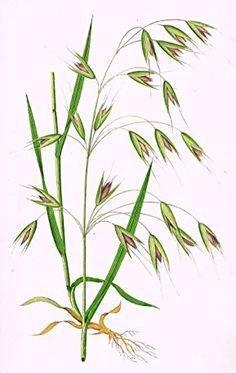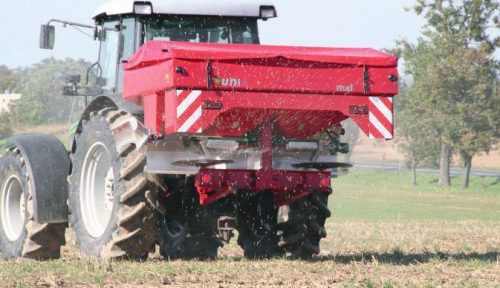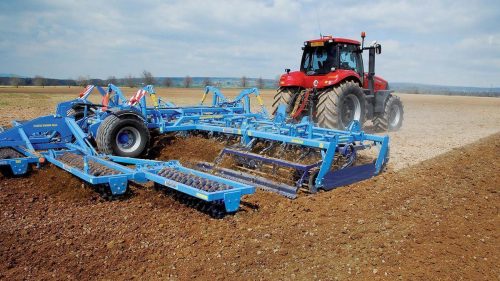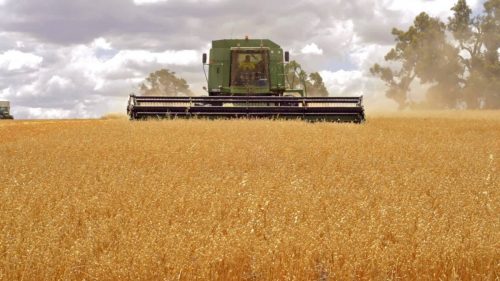Oat, cultivation and harvesting technology
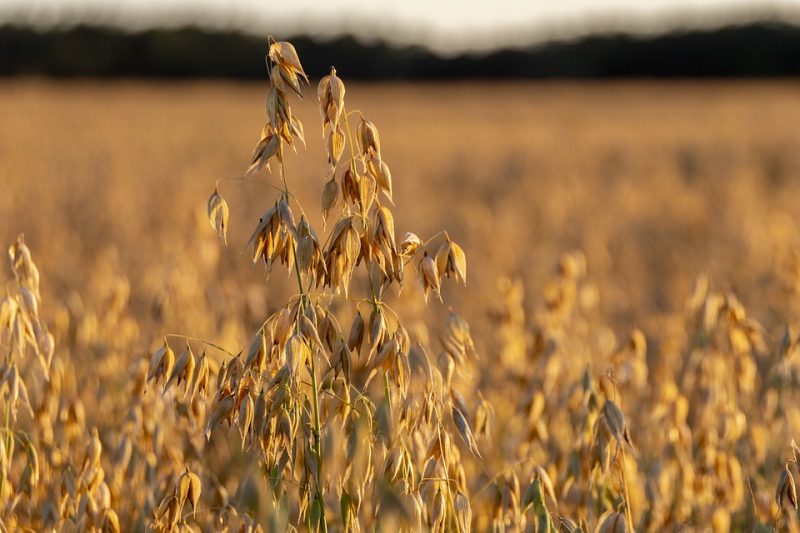
Oat (Avena sativa) was cultivated later than wheat and barley, and it was originally known as a weed. Oat plants capitalize poor soils and areas with harsh climates. Oat grains represent a concentrated animal feed usually given to horses, bulls, rams, dairy cows, or birds. They contain a large amount of digestible protein, which is well tolerated by animals.
Also, oats are a popular animal feed in the form of green plants, having a higher nutritional value than wheat or rye straws. It can be combined with peas or wild vetch-forming mashes. In the human diet, it is used in the form of flakes, flour, or semolina. In the northern areas, oatmeal, in combination with wheat flour, is used to make bread. The main quality of oats is that they can be cultivated in poor quality soils. Also, oats tolerate organic and mineral fertilizers well.
The root system is well developed, reaches large depths, and has a high absorption power. The stem has 5-8 internodes with a length between 80 and 150 cm. The leaves have a lanceolate limb, the spikes are missing or are very small, and the ligule is well developed. The inflorescence is a panicle. The spikelets are arranged at the top of the branches and are made up of 2-3 flowers. The fruit is a caryopsis.
Environmental and soil requirements
The minimum germination temperature is 2-3° C, and the sprouted plants can withstand temperatures as low as -9° C. The oats grow and develop well at temperatures above 12° C and need 1700-2000° C throughout of vegetative growth period. Oats have high water requirements, the maximum consumption is recorded in the phases of straw formation and spike development – flowering. In terms of soil, it has low requirements, but it prefers soils with a pH between 5.5 and 7.
Oat crop technology
Crop rotation
Oat is not pretentious regarding the preceding plant. The best results are obtained if it is cultivated after annual and perennial legumes, peas, beans, soybeans, chickpeas, flax for oil, flax for fiber, rapeseed, potato, sunflower, or corn. It should not be grown after sugar beet and monoculture is not recommended. Oat is sensitive to herbicides that remain in the soil.
Fertilization
Oats react well to organic and chemical fertilizers but are most often fertilized with chemical fertilizers. The doses of fertilizers must be calculated according to the nutrients supply in the soil and the precursor plant. Oat also reacts positively to the application of foliar fertilizers.
Recommended products
-
You can find products on a different store
Change Store -
You can find products on a different store
Change Store -
You can find products on a different store
Change Store -
You can find products on a different store
Change Store -
You can find products on a different store
Change Store -
You can find products on a different store
Change Store -
You can find products on a different store
Change Store -
You can find products on a different store
Change Store -
You can find products on a different store
Change Store -
You can find products on a different store
Change Store -
You can find products on a different store
Change Store -
You can find products on a different store
Change Store -
You can find products on a different store
Change Store -
You can find products on a different store
Change Store -
You can find products on a different store
Change Store -
You can find products on a different store
Change Store -
You can find products on a different store
Change Store -
You can find products on a different store
Change Store -
You can find products on a different store
Change Store -
You can find products on a different store
Change Store -
You can find products on a different store
Change Store -
You can find products on a different store
Change Store -
You can find products on a different store
Change Store -
You can find products on a different store
Change Store
Field works
The soil should be hoed to a depth of about 20 cm. The aim is to loosen the soil, crush the vegetable remains and mix them with the soil. Particular caution must be paid to water retention in the soil. The main plowing has to be done in autumn, and in spring a superficial soil loosening must be carried out, followed by the preparation of the seedbed. Oats require a well-prepared and leveled seedbed. This must be done the day before sowing.
Seeds and sowing
The seed must have a purity of over 98% and germination of over 90%, and the seeds must be as large as possible. The seeds can be treated with insecticides before sowing. Sowing has to be done in spring when the soil reaches 2-3° C. If the sowing is delayed by 10 days, the production decreases by 10%. The sowing density is 450-550 germinating seeds per square meter. The density is established according to the potential of the variety/hybrid, the quality indices of the seeds, and the phytosanitary measures of the soil and the seed. The distance between the rows should be 12.5 cm, 10 cm, or even 6-8 cm. The sowing depth is 2-4 cm. The quantity of seeds per hectare has to be between 120 and 140 kg/ha.
Diseases and pests
The main diseases that can occur in oats cultures are powdery mildew, fusarium wilt, rust, brown spot, loose smut. Among the pests, the most common are oat thrips, wheat aphid, European wheat stem sawfly, oat leaf beetle, sunn pest, ground beetle.
Weed control
This operation can be performed mechanically or chemically. Simultaneously with the destruction of weeds, the destruction of the crust from the surface of the soil can also be achieved. The following herbicides can be used to control oat weeds:
Recommended products
-
You can find products on a different store
Change Store -
You can find products on a different store
Change Store -
You can find products on a different store
Change Store -
You can find products on a different store
Change Store -
You can find products on a different store
Change Store -
You can find products on a different store
Change Store -
You can find products on a different store
Change Store -
You can find products on a different store
Change Store -
You can find products on a different store
Change Store -
You can find products on a different store
Change Store -
You can find products on a different store
Change Store -
You can find products on a different store
Change Store -
You can find products on a different store
Change Store -
You can find products on a different store
Change Store -
You can find products on a different store
Change Store -
You can find products on a different store
Change Store -
You can find products on a different store
Change Store -
You can find products on a different store
Change Store -
You can find products on a different store
Change Store -
You can find products on a different store
Change Store -
You can find products on a different store
Change Store -
You can find products on a different store
Change Store -
You can find products on a different store
Change Store -
You can find products on a different store
Change Store
Harvesting
The oats ripen unevenly and are sensitive to shaking. In order to be harvested in good conditions, the oats must have dry stems, and the grains must be at the beginning of ripening. If the optimal sowing conditions are not met, the combine becomes clogged and the losses are very high. Oats have a large production capacity, but due to their cultivation in poor quality soils, production is low.














































































































































































































































































































































































































































